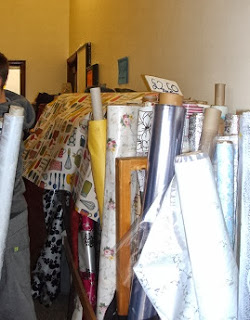For McMillan Cancer Support
Last Friday 27th September, as most people will be aware, was the date selected for 'the World's Biggest Coffe Morning' this year.
All over the UK in towns, cities and villages, coffee (or tea!) and cakes and other goodies were being served in homes, parish halls, schools, community centres, pubs, shops and - in our village's case - the village Social Club, in order to raise funds for Macmillan.
As a therapy radiographer who trained and qualified at The Christie in Manchester (before taking further qualifications and then travelling all over the world!) back in the dawn of time, I am all too well aware of the many and varied forms of help needed during a cancer patient's journey.
One of the girls - Pauline - I trained with in the late 60s/early 70s at The Christie was, until she retired recently, employed by Macmillan as 'the Macmillan radiographer'. in a major teaching hospital's radiation therapy department.
When I heard that Annie, the organiser of the coffee morning at the club, was planning 'stalls', I volunteered to have one. Well, I like to sew, I have the ultimate source of cheap fabric - if it were any cheaper it would be free! - I have years of experience and hours of free time.
So I set to work. Four full aprons, four half-aprons, five plastic-bag-holding 'tubes', ten strings of floral bunting, forty lavender bags and twenty rose-and-lavender bags later, I was ready.
On Friday morning I was up at 6.30 am pouring the lavender into the bags and sewing those final seams ...
By 2.30 pm I was home again, with two aprons, four strings of bunting, one lavender bag and three rose-and-lavender bags. Oh, and a big bag of home-made parkin!
Annie kissed me when I gave her all my takings, just keeping a fiver back because I'd had to buy the lavender!
Then at about 5pm there was a knock on my door and a lady who'd missed the fund-raiser was there - she'd heard I had bunting for sale and was desperate for some. She bought the lot, so that was yet another £20 ... it's fast and dirty bunting, which is why it was so cheap.
Most of the lavender bags sold within the first hour. I should've made more plain lavender bags. Next time. They were much admired, and again a very fast and dirty make.
I'll do tutorials on both the lavender bags and the bunting soon.





















.jpg)



.jpg)
